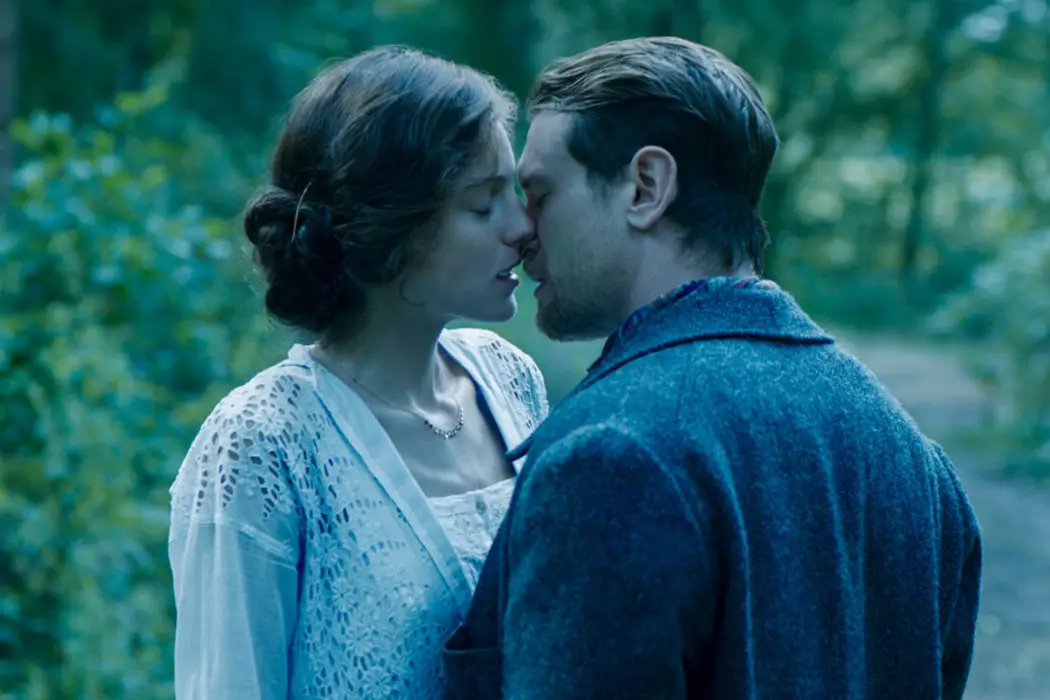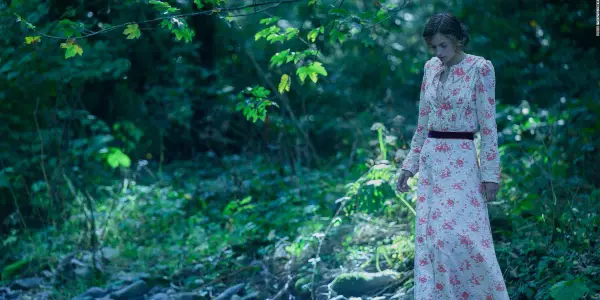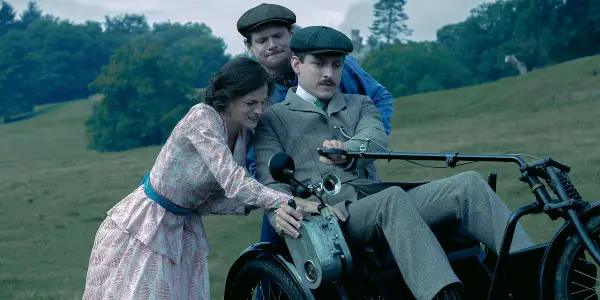LADY CHATTERLEY’S LOVER: A Pensively Romantic Adaptation

Stephanie Archer is 39 year old film fanatic living in…
Romance and cinema have had both a passionate and torrid love affair over the years. From Nora Ephron to Jane Austin, happily ever after to broken hearts, romance knows no bounds. And with the avenues of romance unceasing, there is always one more story to tell, one more love to profess. And while others sink under the weight of formula and expectations, others flourish, many finding their success in both the strength of their story and core of its central couple.
Adapted from D. H. Lawrence‘s novel of the same name, director Laure de Clermont-Tonnerre‘s Lady Chatterley’s Lover is the latest adaptation to grace our screens, taking on love born out of necessity and circumstance, that turns into so much more. Restrained in its pace, Lady Chatterley’s Lover works to craft both a study of isolation and love, all while harnessing the essence of sacrifice.
Effective Opening
Lady Chatterley’s Lover begins basked in laughter and happiness, despite the backdrop of the great war. Connie (Emma Corrin) and Clifford (Matthew Duckett) have just been married, bringing a new Lady of the house to Wragby and the promise of a potential heir to come. There is a youthful feeling to their marriage, their bliss lifted on the shoulders of the sacrifice of those willing to donate portions of their rations to make the day possible. The introduction of sacrifice is but a line of dialogue, subtle in its delivery, but a necessary platform for the film to slowly build off of.

Yet, the blissful nuptials are short-lived for the couple, as Clifford must return to the front lines – visuals transparently played like a memory as he leaves. Sadly though, these visuals are not a memory, as the film moves ahead in time, the war ended and the Chatterleys arrive at the Wragby estate. As is quickly revealed, Clifford was injured in the war leaving him permanently disabled. And it is not just the use of his legs he has lost, but the chance to produce an heir. It is here Lady Chatterley’s Lover begins to develop its love of circumstance within its conflict, a proposal from Clifford that Connie secretly finds a man to bring them a child blending with her growing loneliness and isolation. It is a weight that Connie carries, not just as a conflict but as a catalyst for the undeniable love story that is about to develop.
Weight of Responsibility and Loneliness
Lady Chatterley’s Lover leans heavily into the weight of perceived and imposed responsibility, for both Connie and Clifford. Yet while both feels this weight, the film gracefully and humbly captures the unbalanced nature between the two. Connie is charged with baring an heir, caring for her husband, and betraying and honoring her vows, all while carrying out her daily duties as Lady of Wragby. What is asked of her is unimaginable, forcing her to live a life of contradiction. She is expected to quietly live a life of expectation to meet the needs of the Chatterley name, all while sacrificing her own ideas of love in the process. The film balances this well, especially as pure and uncontained passion grows between her and Oliver (Jack O’Connell).

Lady Chatterley’s Lover works well crafting Connie’s isolation and loneliness leading up to her breakthrough to freedom. The film needs this for its narrative to thrive and for its audience’s investment. It is not a sudden isolation either, the contrast of city to country living and the care of her husband works with the pace of the film to truly develop Connie’s situation at Wragby. It’s these moments where the film feels pensively intimate, giving Connie and the story time to fully flesh out and feel lived in.
Where the love story of Connie and Oliver feels almost like young love, lust in the face of isolation and loss, it forces their story to be more – to mean more. And while the intimacy of the camera elevates the material, the performances of Corrin, O’Connell and Duckett truly ground the film with a breath of authenticity. Corrin‘s Connie stands out, rising above being just the film’s central figure, giving Connie an emotional breadth that feels lived in and true to the story. She carries the film, doing justice to the weight of the adaptation she has been charged with delivering. Audiences will find they investment brewing at the pace of the film, Corrin drawing you further into her love story with each passing moment she is on screen.

Yet, it is not just the performances that will capture your attention, but its look as well. Cinematographer Benoît Delhomme captures both the pensive and hopeful nature of the film through the delicate lighting choices that bask the film in warmth. Soft lighting fills every aspect of the film, even in its darker moments. It captures the isolation and loneliness, but also the passion and fervent hope of a life encompassed by love and mutual understanding. And compounding the success of the lighting is the location where the film exists. At times, the location and historical environment reverberate Downtown Abby, specifically its seasons following the war, while also capturing the essence of Jane Austin within its fiber. Lady Chatterley’s Lover will immediately feel relatable, all while feeling refreshingly new all the same.
Conclusion
Lady Chatterley’s Lover will surprise audiences with how much investment in its characters it is able to achieve. This is a slow burn of passion and storytelling that captures both the scandalous and heartwarming nature of its love story. A controversial read at the time of its release, Lady Chatterley’s Lover here becomes a welcomed tale of love, circumstance, and sacrifice.
Lady Chatterley’s Lover is now available on Netflix!
Watch Lady Chatterley’s Lover
Does content like this matter to you?
Become a Member and support film journalism. Unlock access to all of Film Inquiry`s great articles. Join a community of like-minded readers who are passionate about cinema - get access to our private members Network, give back to independent filmmakers, and more.













